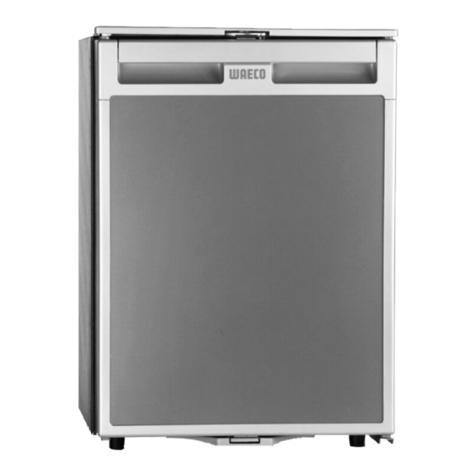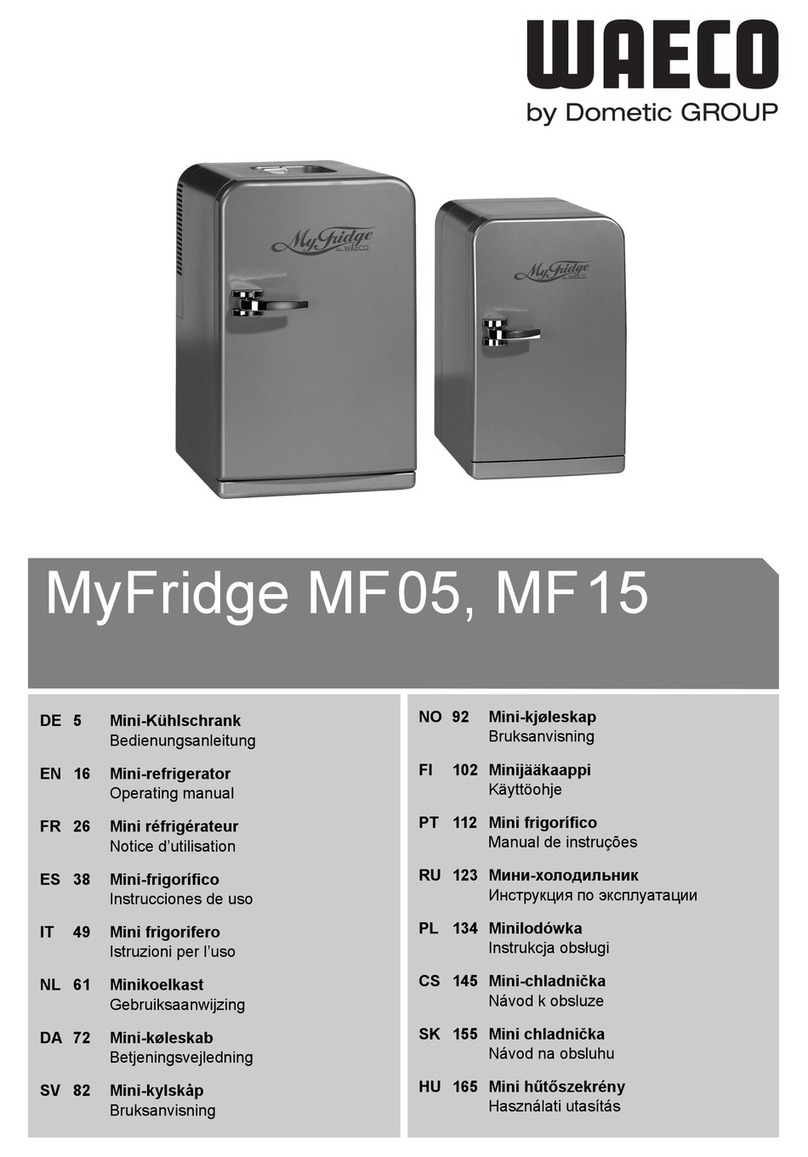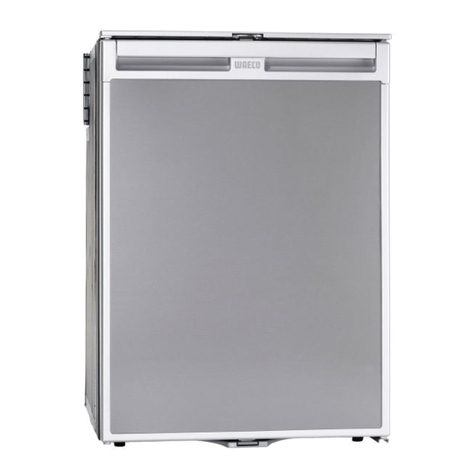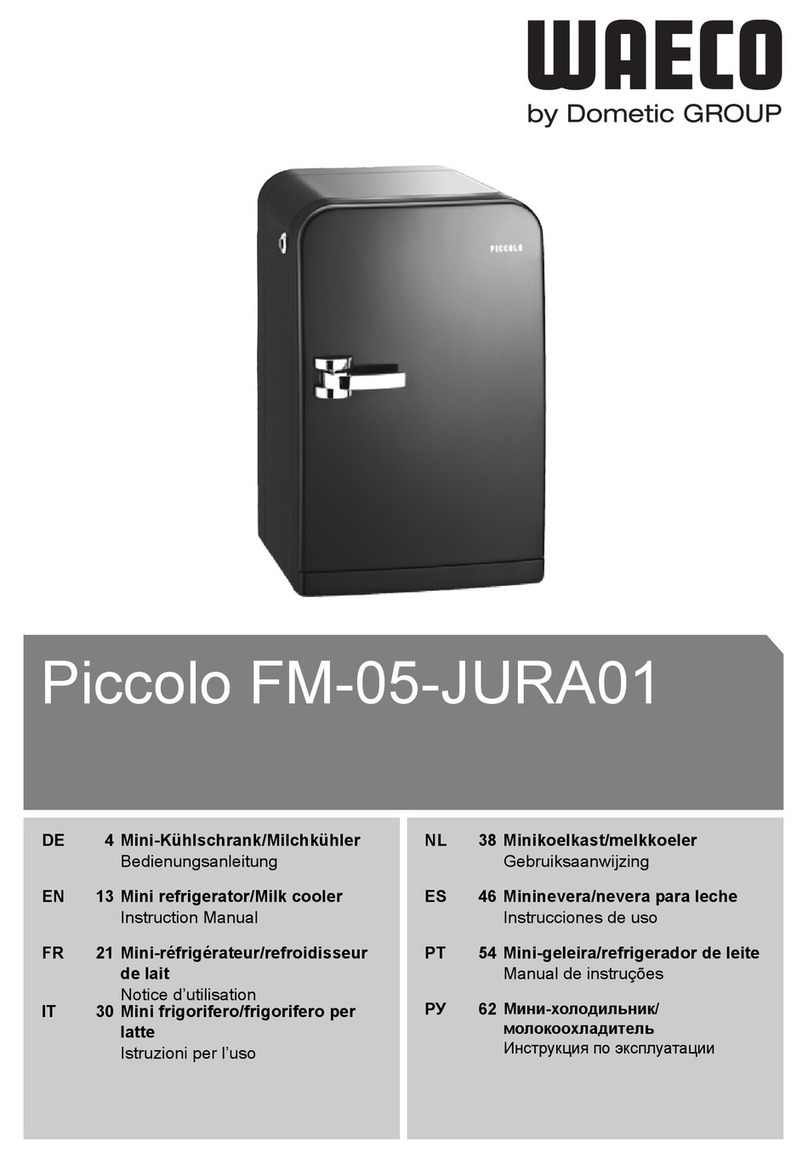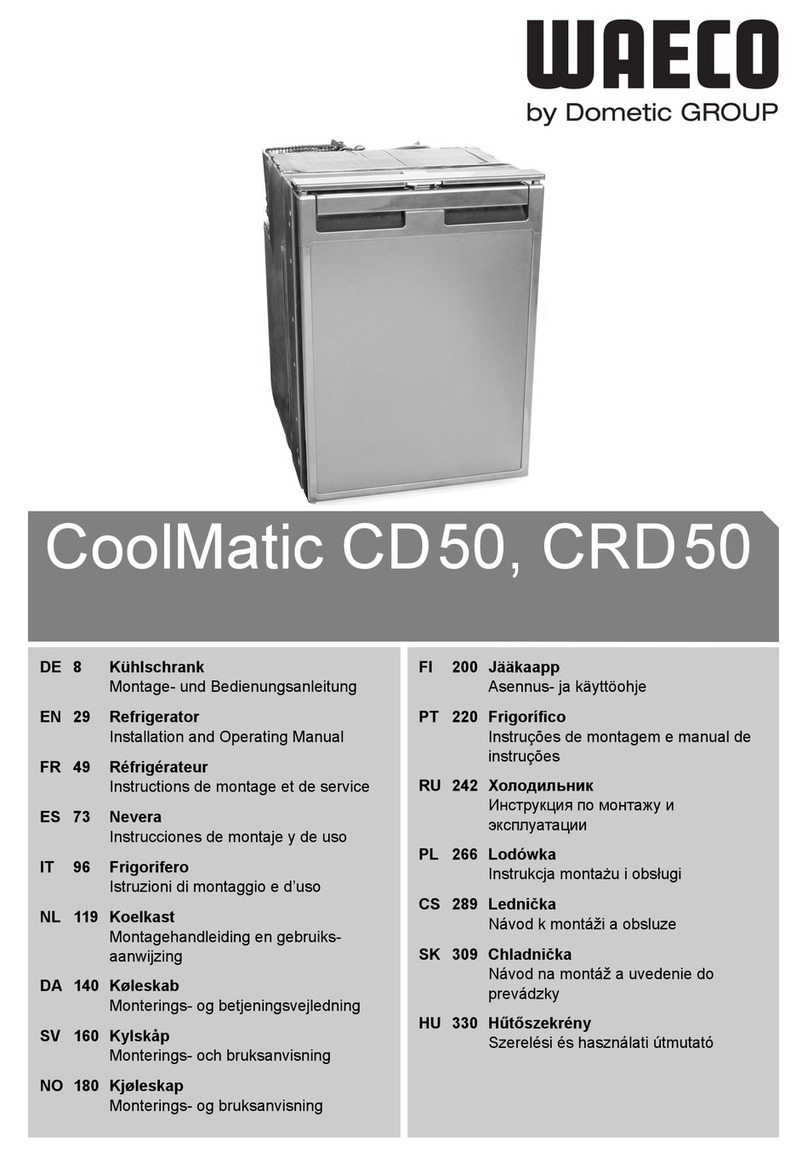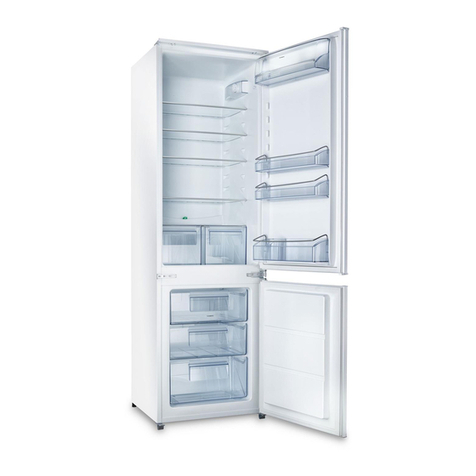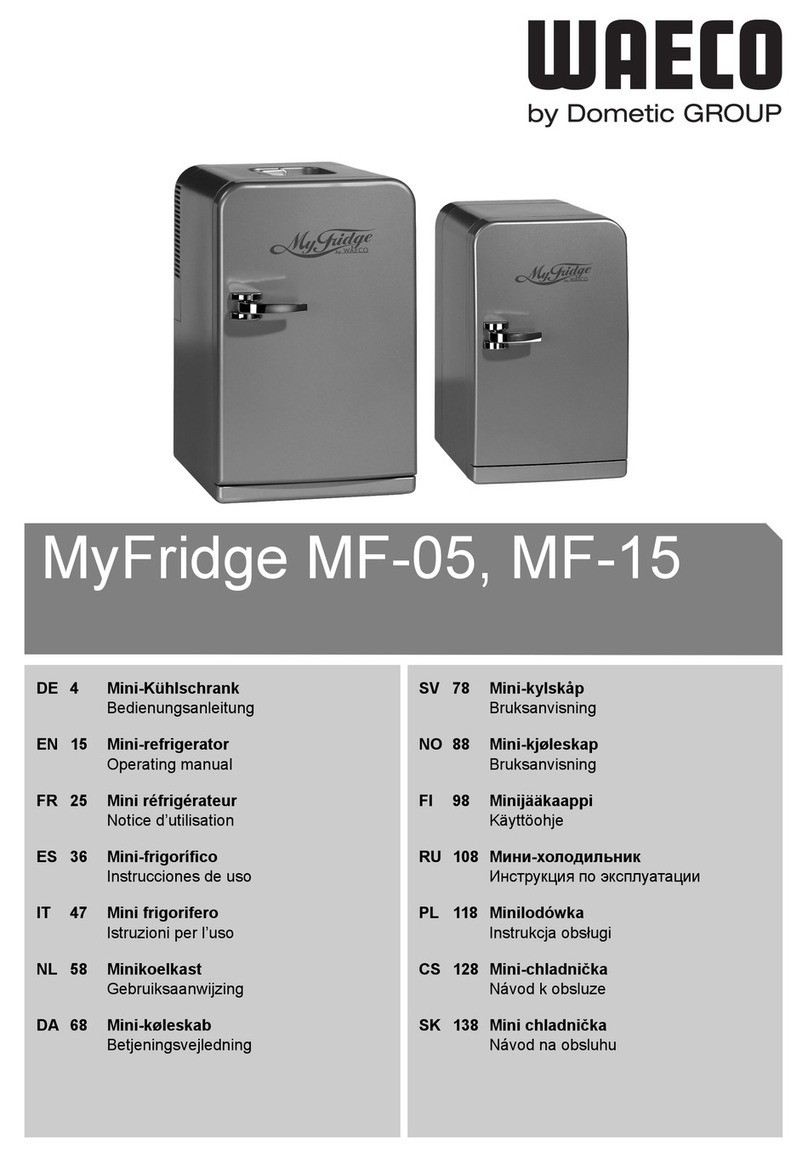
WAECOUSA• Page
3
NOTE: High speed battery chargers may only be con-
nected to the battery after the refrigerator and other
consumables have been disconnected from the battery,
as some chargers (consult charger manufacturer) may
cause high voltage which could damage the compressor.
The refrigerator is automatically protected by reverse polarity
connection, It also will switch off should the battery voltage
become too low. You will find the specification of the
cut-in/cut-out voltage in the table on page 7.
AC OPERATION
You should only use your CoolMatic®refrigerator from AC
power with the MOBITRONIC converter (WAECO USA Part
Number: MPS-35) specifically designed for the BD35F
compressor.
DANGER: Never operate plugs or switches with wet
hands or when you are standing in water. If you operate
your cooling system on-board your boat using 220 V AC
from the AC outlet, it is vital that the system is
protected by an earth leakage protection device.
Please contact an electrical specialist for advice.
CLEANING
Your refrigerator will be delivered cleaned from the factory—
you none the less, should wipe it clean prior to first use.
Take a cloth that has been slightly moistened with lukewarm
water. Pay attention that no water drops into the seals and
possibly damages the electronics. Dry off the refrigerator
with a cloth after cleaning. Clean the refrigerator periodically
and as soon as it is dirty.
ATTENTION: Never us solvents or agents with abrasive
or acidic chemicals for cleaning the evaporator. Never
use wire brushes, sharp scrapers or tools to clean ice
from the evaporator.
INITIAL OPERATION
Switch on the refrigerator by
turning the thermostat knob
“A” clockwise. By rotating the
knob, you can regulate the
internal temperature.
ATTENTION: The refrigerator
may need up to 60 seconds
for the compressor to start.
TAKING OUT OF SERVICE
If you wish to switch off the refrigerator for longer periods of
time, disconnect the AC supply or disconnect the DC supply.
Allow the refrigerator to defrost and clean up the condensa-
tion. Always leave the door or lid slightly open to prevent
the formation of mold and odor.
DEFROSTING
Air humidity can leave a thick coat of ice on the evaporator
plate which will reduce the cooling performance. Never use
hard or sharp implements to remove ice. This can cause
damage tot he plastic materials or to the evaporator,
therefore defrost the refrigerator in good time. Take out the
refrigerated products and store them in another cooling
appliance so they remain refrigerated, set the thermostat
knob to “0” and leave the lid or door open. Wipe the melted
water with a sponge or soft cloth and pour away any water
collected in the drip tray.
TIPS FOR ENERGY SAVING
• Mount the refrigerator in a cool dry place away from direct
sunlight.
•Always allow food to cool before storing in the refrigerator.
• Defrost your refrigerator periodically or when the
evaporator is covered with a thick layer of ice.
• Do not set the thermostat colder than the required
temperature.
• Do not open the refrigerator more often than necessary.
• Do not leave the lid or the door open any longer than
necessary.
• Always ensure that the compressor and condenser
are in a well ventilated area. If necessary, add
additional ventilation.
BATTERY CONTROLLER
The refrigerator is equipped with a battery controller. This
device cuts-out and cuts-in the compressor and therefore,
protects the battery and the compressor. The following table
indicated the cut-out and cut-in voltages measured at the
connection terminals of the battery controller:
Cut-OUT Voltage Cut-IN Voltage
12V / 24V 12V / 24V
Low 10.4V Low 22.8V Low 11.7V Low 24.2V
High 11.3V High 24.6V High 12.5V High 26.0V
A


